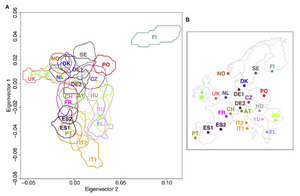The growth of shared Wi-Fi and other wireless computer networks has increased the risk of eavesdropping on Internet communications, but researchers at Carnegie Mellon University's School of Computer Science and College of Engineering have devised a low-cost system that can thwart these "Man-in-the-Middle" (MitM) attacks.
The system, called Perspectives, also can protect against attacks related to a recently disclosed software flaw in the Domain Name System (DNS), the Internet phone book used to route messages between computers.
The researchers - David Andersen, assistant professor of computer science, Adrian Perrig, associate professor of electrical and computer engineering and public policy, and Dan Wendlandt, a Ph.D. student in computer science - have incorporated Perspectives into an extension for the popular Mozilla Firefox v3 browser than can be downloaded free of charge
here.
